Disclosure: This post may contain affiliate links. I may earn a small commission for my endorsement, recommendation, testimonial, and/or link to any products or services from this website.
These easy 10 Minute Peanut Noodles are tossed in a delicious peanut sauce and served while warm and creamy. They’re wholesome, comforting, and my favorite last minute dinner! Vegan, Gluten-free option, Oil-free option.
These Peanut Noodles are made with your favorite noodles, a few simple sauce ingredients, and tossed until well coated and ultra creamy. It’s the perfect main to enjoy with crispy tofu and a simple sprinkle of crushed peanuts, green onion, and additional spice.
Table of Contents
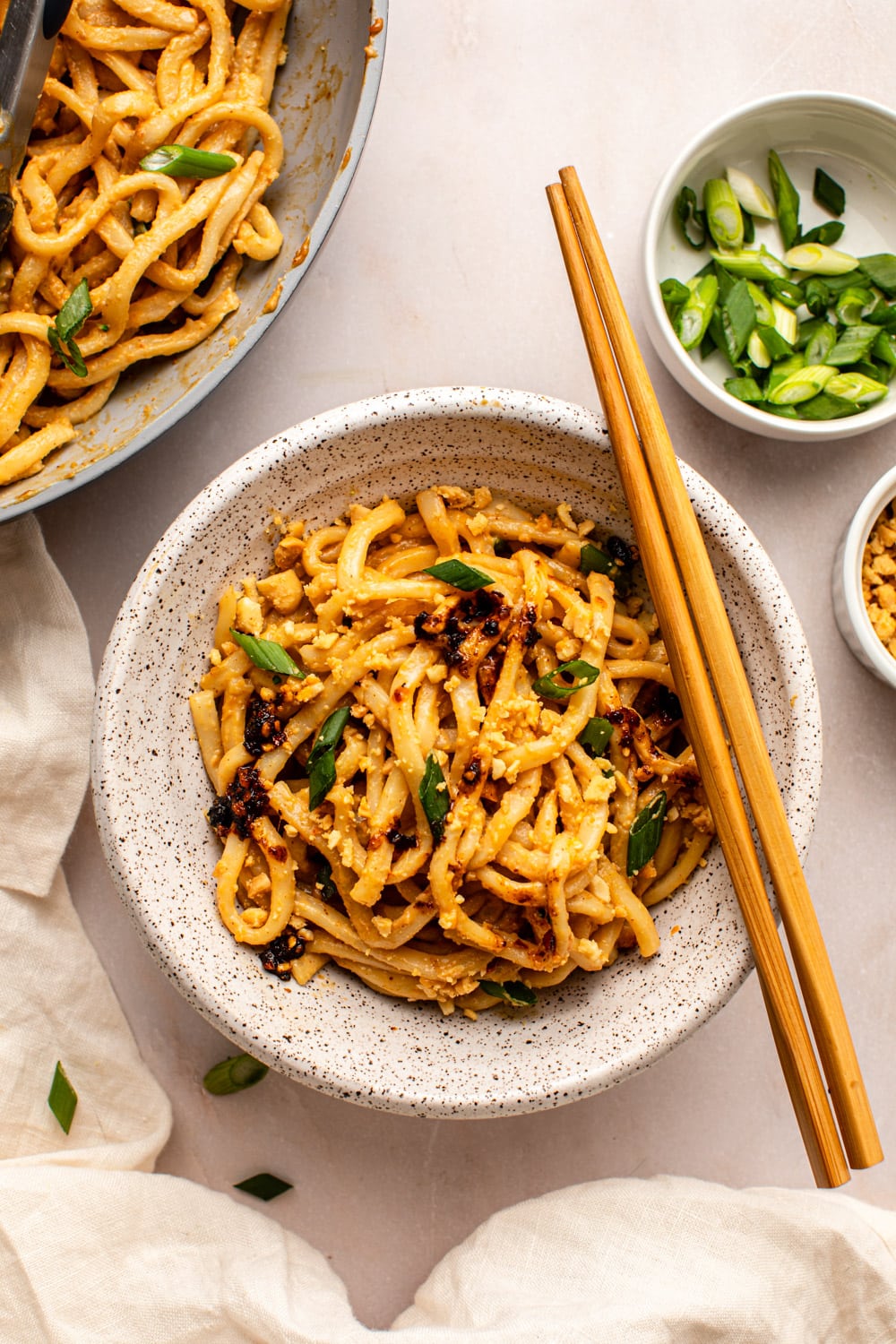
The Ultimate Weeknight Noodles
If you’re ever drawing a blank on what to add to your dinner menu, creamy peanut noodles are always the answer. On busy weeknights, sometimes all I have is 10 minutes to make dinner. While I can always heat up leftovers or defrost a freezer meal, sometimes I want something fresh and delicious and these noodles are the best of both worlds.
They’re truly ready in 10 minutes or less (udon noodles only take 2 minutes to cook!) and the creamy peanut sauce can be adjusted to suit your cravings. Make them extra spicy, garlicky, saucy, or pair with your favorite protein.
What You Need for Peanut Noodles
Homemade Peanut Noodles require just 8 ingredients, plus a few for topping. Here’s a quick rundown on the essentials:
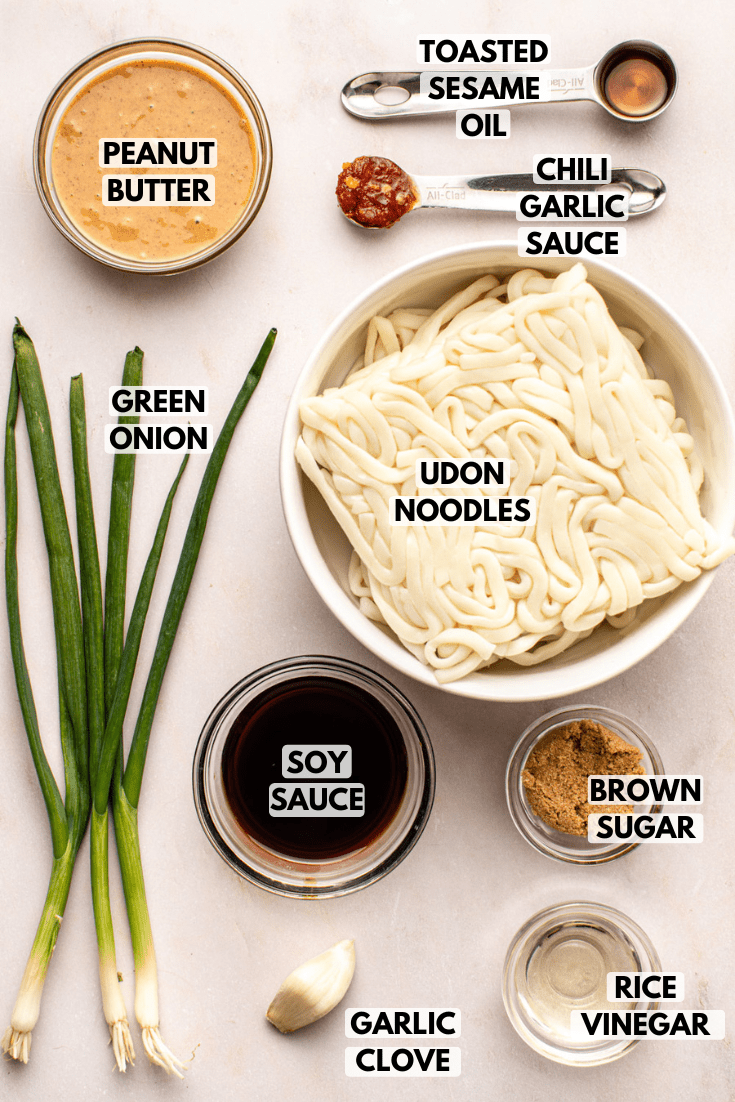
- Noodles – My favorite are udon noodles, but you can truly use any noodles you have on hand. Try soba noodles, rice noodles, ramen noodles, or even regular spaghetti.
- Peanut butter – Go with a quality, natural peanut butter. Avoid versions containing added oils, sugars, preservatives, or other additives. Creamy peanut butter is also preferred over crunchy peanut butter, but crunchy can work in a pinch.
- Soy sauce – Adds umami flavor and essential saltiness. I used low-sodium soy sauce, but if your peanut butter is unsalted, you may want to use full-sodium soy sauce or add additional salt to taste.
- Rice vinegar – The acidity helps brighten the creamy sauce and creates layers of complexity in the flavor.
- Sugar – A little sweetness balances the savory, spicy flavors. Brown sugar, maple syrup, and agave all work well. Use what you have!
- Chili garlic sauce – Adds a little heat without overpowering the peanut flavor. If needed, sub with sriracha or a similar chili oil.
How to Make Peanut Noodles
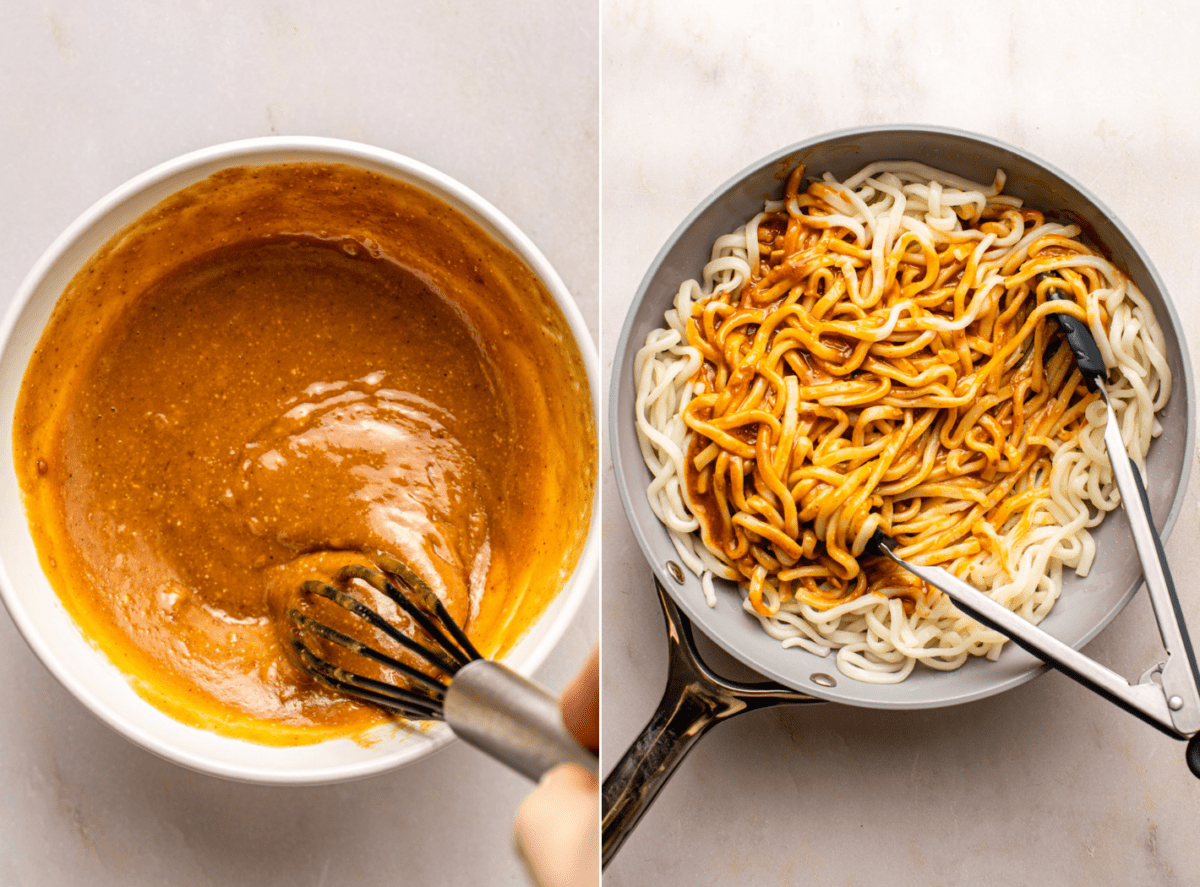
- Cook the udon noodles according to the package instructions.
- Whisk the peanut butter, garlic, soy sauce, vinegar, sugar, sesame oil, and chili garlic sauce into a thick paste. Add two tablespoons of hot water and whisk until a thick sauce forms and the sugar is dissolved.
- Drain the noodles then return them to the pot or a shallow pan. Pour the peanut sauce overtop and mix until every noodle is coated.
- Serve while warm with desired toppings.
Caitlin’s Cooking Tips
- Use the correct noodle to sauce ratio. If you cook too many noodles, the peanut sauce is going to be spread too thin and be underwhelming in flavor. If anything, it’s better to have too much peanut butter sauce than not enough.
- Don’t rinse the udon noodles! Although I’ve called for running cooked pasta under cool water a time or two, that’s not the recommendation here. Rinsing the noodles would remove all of the excess starch and make it difficult for the peanut sauce to cling to the noodles. For the best, saucy noodles, transfer the drained noodles directly back into the pot.
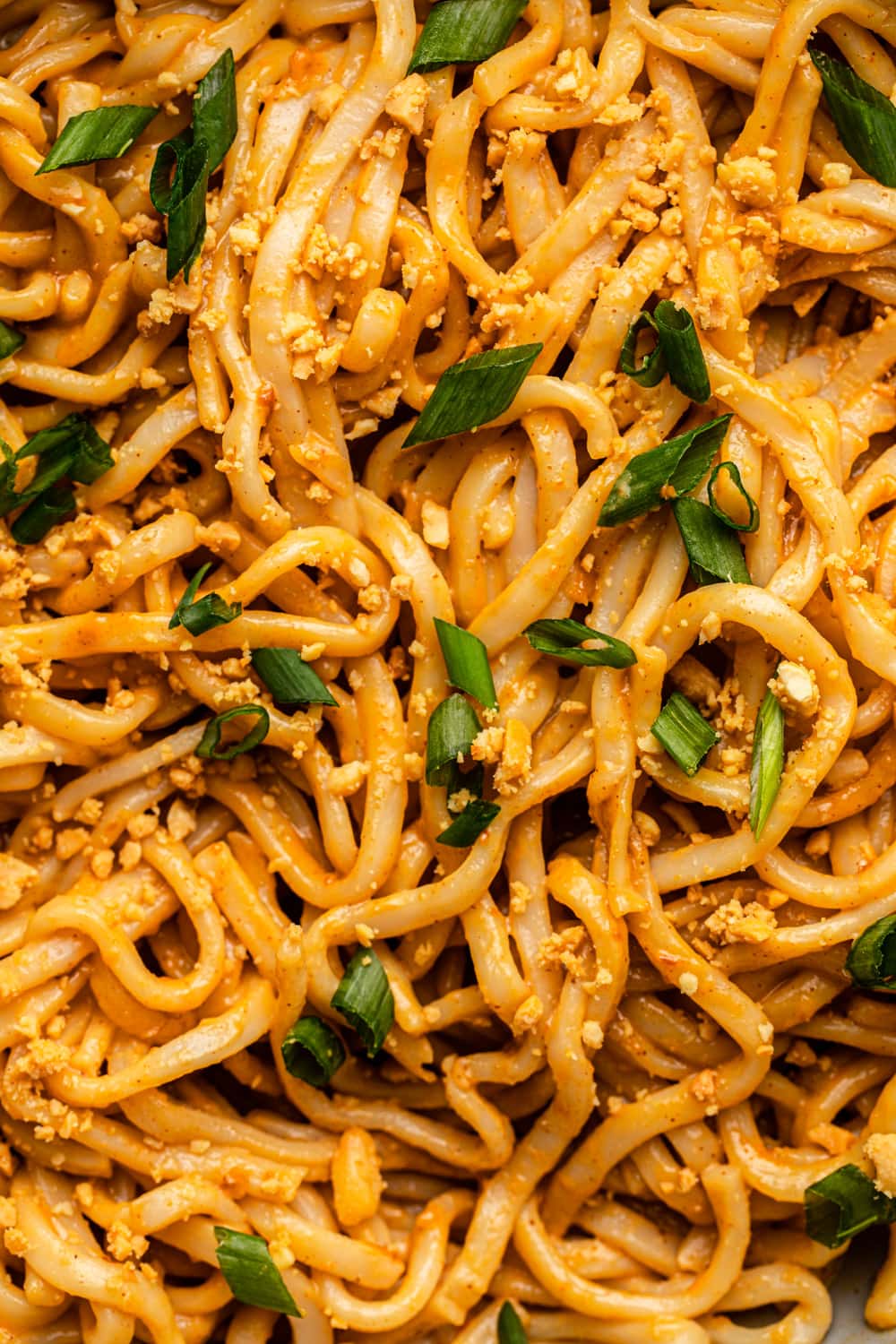
Serving Suggestions
Saucy peanut noodles are delicious for lunch, dinner, or snacking on right out of the pan (I won’t judge). They’re hearty enough to enjoy on their own topped with crushed peanuts, green onion, and extra chili oil for a little kick, but pair well with simple sides.
Try these noodles with a side of Edamame Salad with Smashed Cucumbers, Crunchy Ginger Cabbage Slaw, or these Vegan Summer Rolls and extra Peanut Sauce for dipping.
If you’re looking for more easy noodle recipes, you’ll also love this Vegan Pad Thai, this Vegan Tofu Pineapple Curry and this Fresh Thai-Inspired Salad with Tempeh!
How to Store Peanut Noodles
Leftover peanut noodles will keep in the fridge in an airtight container for up to 4 days. Freezing is not recommended.
To reheat, return the noodles to a shallow pan on the stovetop or microwave until warmed through. Once cooled, the peanut sauce will thicken so if needed, add an additional splash of water to help thin the peanut sauce back out again.
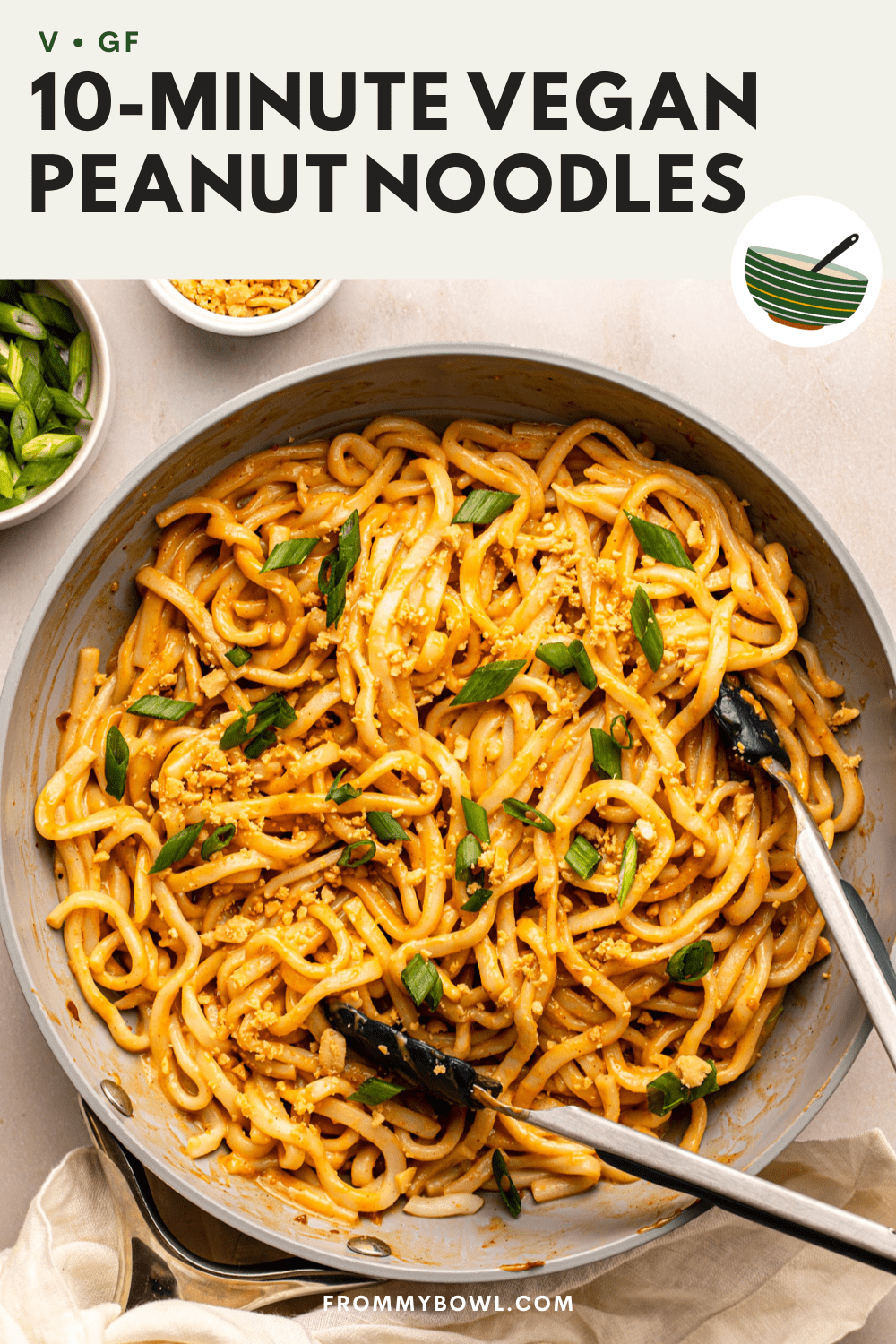
Substitutions and Variations
- Gluten-free option: Substitute the wheat-based udon noodles with gluten-free noodles such as rice noodles and use low-sodium tamari instead of soy sauce.
- Oil-free option: Omit the teaspoon of sesame oil and use sriracha instead of sambal oelek. Most store-bought chili garlic sauces contain added oil.
- Peanut-free option: If you have a peanut allergy, replace the natural peanut butter with creamy almond butter or cashew butter. These butters are much more neutral in flavor, but will still make a delicious creamy sauce.
- Add protein: Toss in some Baked Sweet Chili Tofu, Baked Tempeh or simple Crispy Tofu for a boost of protein.
Recipe FAQs
Although the name contains “butter,” it doesn’t contain any butter at all and is 100% dairy free. Peanut butter is made by blending peanuts until the natural oils in the nuts are released and the nuts morph into a creamy, buttery consistency. The only ingredients in a jar of natural peanut butter should be peanuts and salt.
While both of these noodles are made from wheat, they are different in texture and size. Udon noodles are much thicker and more bouncy and chewy. Ramen noodles are much thinner and softer and better suited for this Creamy Vegan Mushroom Ramen or this Garlic Ramen Noodle Stir Fry.
Once opened, peanut butter should be refrigerated. Unlike peanut butter spreads that contain additives and preservatives, natural peanut butter can spoil when left at room temperature.
Enjoy! If you make this recipe and decide to share it on Facebook or Instagram, don’t forget to tag me @FromMyBowl + #FromMyBowl! I would also love it if you could leave a comment below with a recipe rating! Thank you for the support 😊
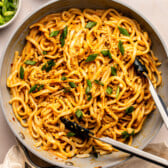
10 Minute Peanut Noodles
Ingredients
- 8 ounces dried udon noodles or 12 ounces fresh
- 1/4 cup creamy natural peanut butter
- 1 clove garlic crushed (optional)
- 2 tablespoons low sodium tamari or soy sauce
- 1 tablespoon unseasoned rice vinegar
- 1 tablespoon brown sugar agave, or maple syrup
- 1 teaspoon toasted sesame oil
- 1 teaspoon chili garlic sauce sambal oelek or sriracha
- 2-3 tablespoons hot water
- Optional: crushed peanuts chili oil, and green onion, for serving
Instructions
- Prep: Bring a large pot of water to a boil and cook the udon noodles according to the package instructions; dried noodles will take around 8-12 minutes while fresh noodles take 1-2 minutes.
- Make the Sauce: In a small bowl combine the peanut butter, garlic, tamari, vinegar, sugar, sesame oil, and chili garlic sauce. Whisk together until a thick paste forms, then add 2 tablespoons of hot water and whisk until a thick sauce forms and the sugar has dissolved. Add more water if necessary, but keep in mind that the sauce will thin out more when combined with the noodles.
- Combine: Drain the noodles well and return to the pot or a shallow pan. Pour the peanut sauce over the noodles and use tongs to mix well, until every noodle is coated. The residual heat left from cooking the noodles usually warms them up enough for me, but you can also gently heat the noodles over medium low heat if desired.
- Serve: Top with green onion, crushed peanuts, and/or chili oil and serve warm. Leftovers will keep in the fridge for up to 4 days and are best reheated on the stovetop or in the microwave with a splash of water to help thin the sauce out again.
Recipe Notes
- Gluten-Free: Udon noodles are not gluten-free but you can easily substitute them with rice noodles! Use tamari instead of soy sauce to keep this recipe gluten-free.
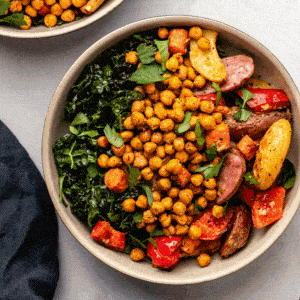

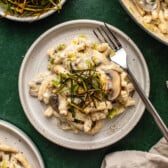
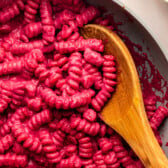
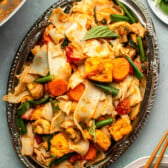
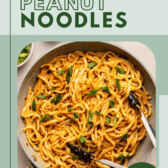
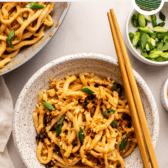
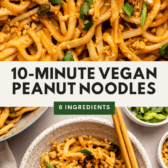
This recipe is fantastic! I make this all the time for a quick dinner and it never disappoints. I don’t usually keep raw peanuts on hand so I use chunky peanut butter and don’t have to chop!
Thank you so much, Victoria! We’re glad you enjoyed it!
Everyone devoured these, including the baby! Easy and delicious, wish I had doubled the recipe.
We love that! Thank you, Rebecca!